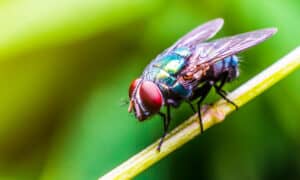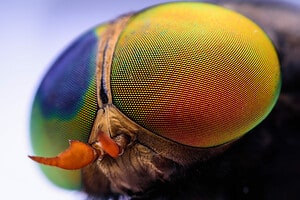“Shoo fly, don’t bother me!” Flies can be a nuisance, and fly-swatting a workout with how fast they get away from you. These agile insects can flap their wings 200 times per second while hovering, turning, and diving, putting on a performance we all can appreciate.
But do their flying skills work to their advantage in all weather conditions, or do raindrops pummel them to the ground? Where do flies go when it rains? Most flies hide under leaves, bark, debris, or in small spaces they find in their environment. However, some flies can fly in the rain if they need to, depending on the severity of the weather.
Let’s delve into the wonderful world of flies and how they survive in various weather conditions.
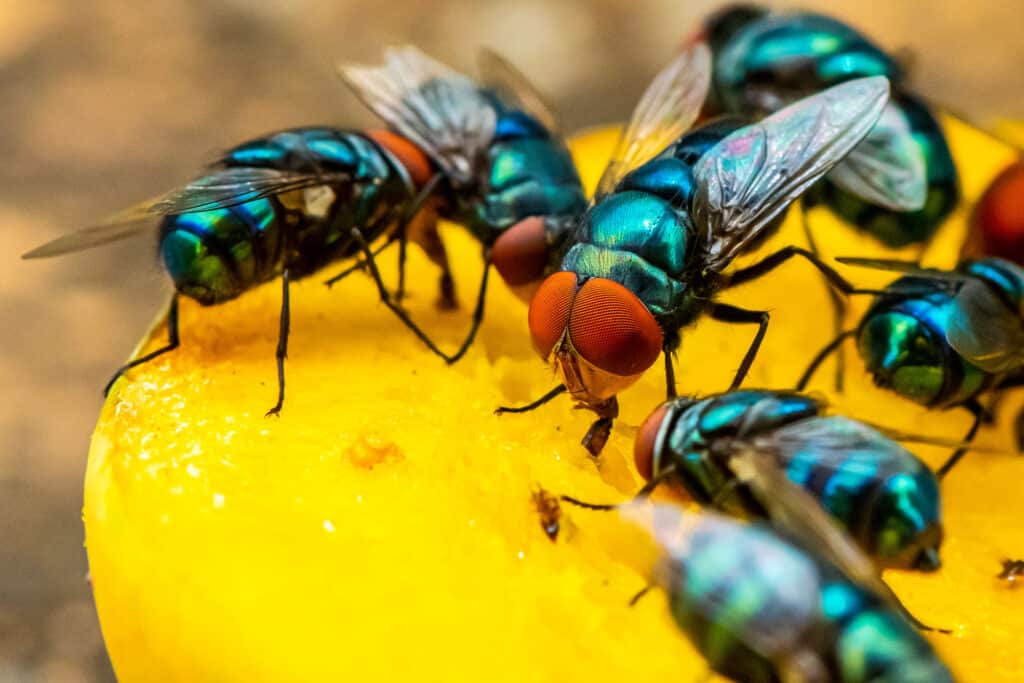
Depending on resources, such as shelter and food, a fly’s lifespan is 25 days.
©iStock.com/Phichaklim1
Can Flies Fly in Rain?
Flies belong to the order Diptera, which contains over a million species of various two-winged species. Flies have one pair of wings and a pair of reduced halteres that allow them to hover, fly in a straight line, and rapidly change directions.
The answer about whether flies can fly in the rain varies on several conditions, namely, the size of the fly and the severity of the weather conditions. Normally, flies find shelter under leaves or small spaces throughout their environment when they sense rain coming. When a fly’s wings get wet, they may stick together, making it difficult to fly. Larger flies are less likely to get beaten down by water droplets, while small flies cannot maintain flight in heavy rain.
If weather conditions are intense, such as a thunderstorm or heavy downpours, most flies won’t survive the flight or will seek shelter as soon as possible.
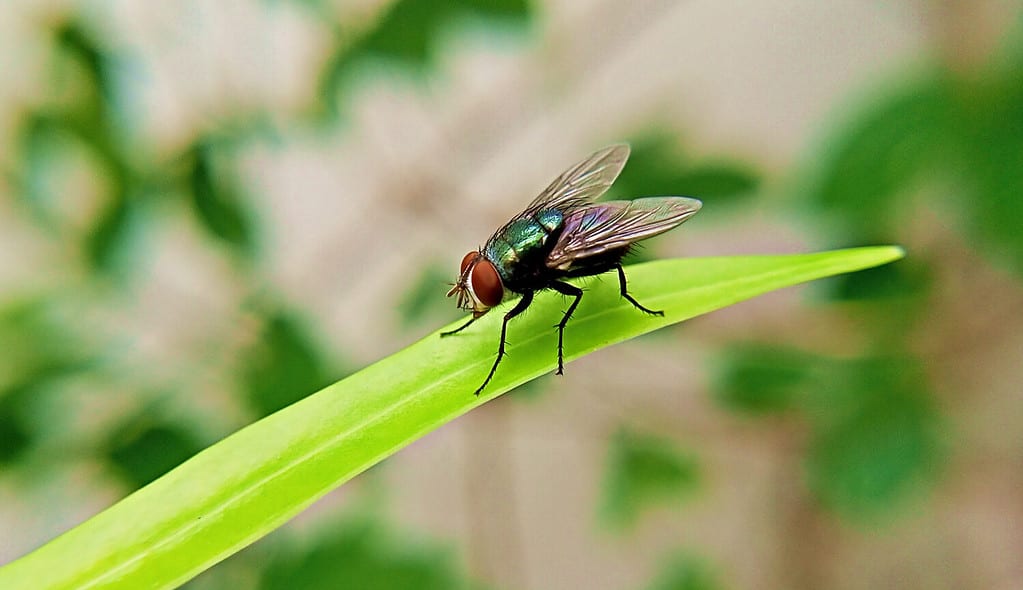
Female flies can lay 75-150 eggs at a time.
©AvishekS/Shutterstock.com
Where Do Flies Go in the Winter?
Flies are vulnerable to heat loss due to their thin exoskeleton and size. In addition, they won’t generate their own heat like other animals. Most species will die when winter arrives, while others find a warm space to try to survive.
Have you seen less flies in the winter? While flies don’t hibernate per se, they enter into a hibernation-like state known as diapause caused by environmental changes. As the temperature drops and food sources are scarce, flies will hide in cracks, crevices, and other sheltered spots in their environment. You may even find sleepy flies in cracks or holes around your house as they wait out the cold.
As temperatures warm and spring approaches, their metabolic activity increases, and appetite returns.
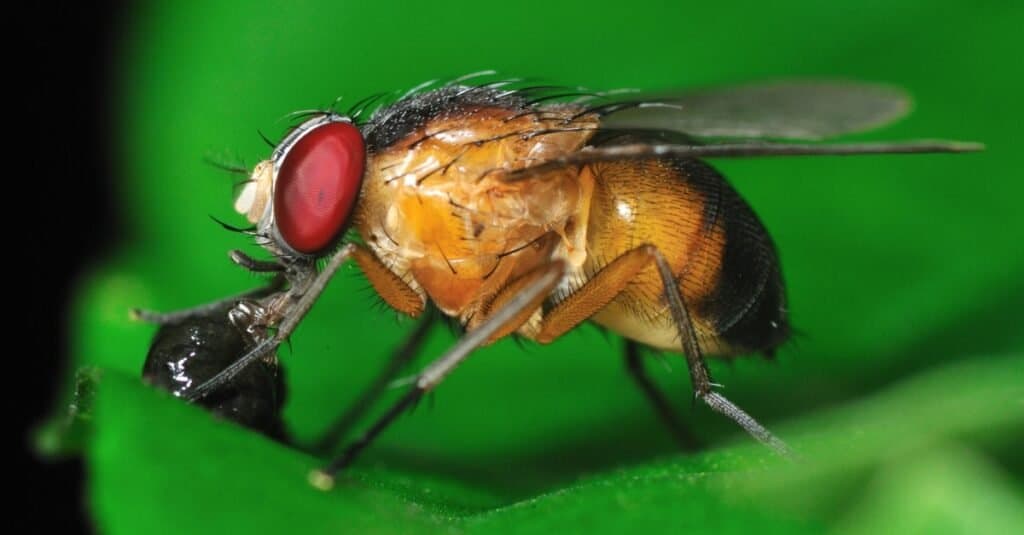
Flies hide under leaves or in small crevices to escape the rain.
©Jordan Lye/Shutterstock.com
How Does Cold Temperatures Affect a Fly’s Lifespan?
What’s the point of flies going into a diapause if they have a short lifespan? It is a common misconception that flies only live for a few days, but their lifespan is around 25-30 days. During diapause, their lifespan increases as their metabolic functions and growth slow significantly.
Female flies can lay around 500 eggs in their lifetime — between 75 and 150 at a time. When these eggs hatch, the larvae will feed on organic material before finding a warm place to undergo the pupa stage. Here, the larvae will transform into the two-winged fly. It can take about 14 days to morph into a fly during optimum conditions. However, this transformation can take two months during the fall and winter as the process slows down due to the cold.
The photo featured at the top of this post is © nechaevkon/Shutterstock.com
Thank you for reading! Have some feedback for us? Contact the AZ Animals editorial team.




